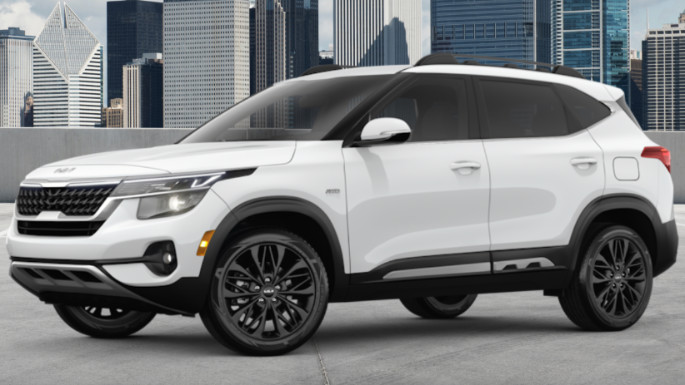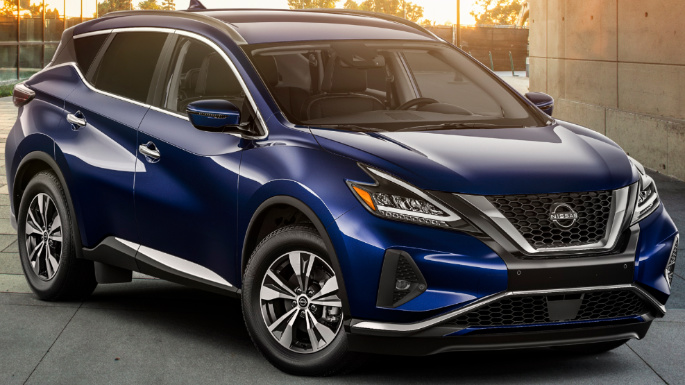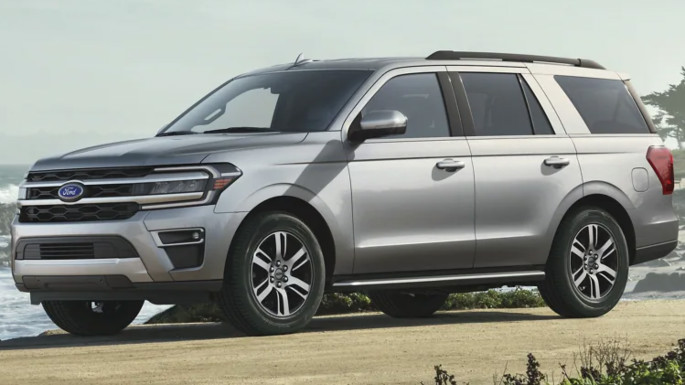What Does SUV Stand For?
‘SUV’ stands for Sport Utility Vehicle, a vehicle designed with passenger car characteristics but capable of handling much more rugged, off-road terrain. The SUV has evolved over many generations for all automotive manufacturers. It covers a broad range of four-wheel drive (4WD) and all-wheel-drive (AWD)-equipped vehicles.
The term SUV can be applied across the spectrum of vehicle offerings, from large vehicles, such as the Range Rover and Chevrolet Suburban, to smaller vehicles offering minimal off-road capabilities, like the Honda CRV and other popular crossover SUVs. Vehicles that continue to be built with off-road capability at their core, like the Jeep Wrangler and the new Ford Bronco, are also included under the SUV acronym.
SUV Overview
Original SUVs were built on a truck chassis with a more off-road-focused design than modern SUVs, which feature a unibody construction. In modern SUVs with unibody construction, the vehicle’s floors, body, and chassis all form a single structure. This body-on-frame structure allows modern SUVs to look and feel like a combination of a truck, a minivan, and the average American family car.
SUV Pros:
- Most modern SUVs offer four to five doors for easy access and space to accommodate families.
- SUVs combine the practicality of storage space and hauling capability as pickup trucks with the interior comfort of a station wagon.
- Offering two to three rows of seating, SUVs provide their owners with flexibility in usage and space to pick up groceries, carry luggage, haul sporting equipment, and still have enough seating, in some cases, for up to seven people.
- They are purpose-built vehicles that offer higher ground clearance, towing capability, and an excellent off-road driving experience.
SUV Cons:
- Some SUVs are bulkier than others, making them difficult to maneuver in small spaces and a nightmare to park.
- Modern SUVs are also quite expensive compared to their more fuel-efficient smaller vehicle counterparts in the same price range.
- Fuel efficiency has never been an SUV’s strong point. If fuel efficiency and compact design are at the top of your list, an SUV may not be for you. However, fuel economy figures for modern SUVs have improved, with examples like the front-wheel drive (FWD) equipped Nissan Rogue compact SUV which achieves up to 37 miles-per-gallon (mpg) on the highway.
Types of SUVs:
There are three main classifications of SUV sizes: small, mid-size, and full-size. Each classification of SUV has examples of the broad range of requirements for each size category.
Small SUVs:
Small SUVs range in size from mini SUVs and sub-compact SUVs like the Hyundai Santa Fe and Kia Seltos to compact SUVs such as the popular Honda CR-V, Jeep Wrangler, and Nissan Rogue. Small SUVs are usually outfitted with all-wheel-drive (AWD) drivetrains and minimal off-road capability, with exceptions from various automotive manufacturers. However, small SUVs are sustaining the current growth of the SUV market along with their crossover counterparts.
If you are in the market for a small three-row SUV, models such as the Volkswagen Tiguan and Kia Sorento are great options geared toward offering more passenger seating. The small SUV segment also offers sporty models with responsive handling and steering, such as the Mazda CX-5, and smaller models that are easier to park and maneuver in tight spaces.
Mid-Size SUVs:
The mid-size SUV segment is a highly desirable class of vehicle due to its practical size combined with increased off-road ability over small SUVs. Almost every automaker has a vehicle represented in this class, making it difficult for consumers to find which mid-size SUV best suits their needs.
Some vehicles in the mid-size SUV segment share a platform similar to mid-size SUV segment share a similar platform as passenger cars. In contrast, others are built on mid-size and compact pickup truck platforms.
Mid-size SUVs gained popularity by offering the best parts of a small SUV and adding extra passenger and cargo space. Mid-size SUVs offer additional towing capacity and often more robust powertrain options than smaller SUVs. Popular examples of SUVs in this category are the BMW X6, Porsche Cayenne, Nissan Murano, and Toyota 4Runner.
Full-Size SUVs:
The vast majority of full-size SUVs are built on the full-size chassis of a pickup truck. However, there are exceptions, as different automakers make their full-size SUVs for different purposes. Manufacturers like Toyota and Chevrolet focus on the off-road capability of their full-size SUV fleet of vehicles, while Lincoln and Cadillac lean toward developing luxurious and comfortable riding full-size SUVs.
A full-size SUV combines a heavy-duty feel and capability with modern technology found in passenger cars. Full-size SUVs offer the most interior space in the SUV segment, with some models seating up to eight or nine passengers. According to Kelly Blue Book (KBB), the best SUV representatives of this segment are the Ford Expedition MAX, Jeep Wagoneer, GMC Yukon, and Lincoln Navigator.
SUV History
Sport Utility Vehicles have developed over the generations, and so has their SUV meaning and purpose. The first SUV prototypes appeared before and during World Word II in the form of Willy’s Jeeps. The first examples were large vehicles fitted with 4WD and large interiors built strictly for handling rough terrain. The term ‘SUV’ was first utilized in brochures for a full-sized 1974 Jeep Cherokee SJ. Still, it did not receive much recognition until the 1980s when American Motors Corporation lobbied the United States Congress to make a separate category for vehicles that were neither trucks nor passenger cars.
In its original format, the term SUV had a slash to symbolize the vehicle’s dual nature and was referred to as a “sport/utility vehicle. Before a clear SUV segment was developed, tough, roomy station wagons were the point of reference for many consumers and were referred to as “utility wagons.” The 1933 Chevrolet Suburban is known as one of the first SUVs in production before the term SUV was coined.
Many consumers associate SUVs with pollution and materialism and view them as strictly status-symbol purchases. The Land Rover Range Rover is one of the most popular SUV options helping push this opinion. However, it has many class-leading off-road ability underpinnings. Due to this popular opinion of SUVs, crossover utility vehicles (CUVs) have become a popular alternative for consumers desiring a smaller, less flashy vehicle appearance.
While the first examples of SUVs were built with two doors, the rising popularity of the vehicle segment has led automakers to develop four-door and five-door (hatchback) SUVs. Consumers demanded more space for passengers and cargo while increasing off-road ability, and automakers have delivered.
As with all trends, the popularity of SUVs will soon be replaced by another vehicle option. With consumer care for fuel efficiency, the shift in popularity is changing toward electric vehicles. There are a few full-size three-row all-electric SUVs today, such as the Tesla Model Y and multiple hybrid threw-row options. Still, neither the all-electric nor hybrid options on the market compared to the space offered in the gasoline-powered Chevrolet Tahoe or GMC Yukon.
What Is An SUV?
The SUV acronym stands for Sports Utility Vehicle. Commonly dubbed as a ‘Jeep’ or Four-by-four, SUVs are characterised by their large body size, raised ride height, and rugged looks. Birthed from the need to transport equipment, travel off-road, and scale rocks/rivers, original SUVs were popular amongst farmers, adventure/equine sports enthusiasts, and emergency rescue services for their four-wheel or all-wheel-drive capability. They are also much safer to navigate in harsh weather conditions and throughout the snowy roads over winter.
Nowadays the majority of SUVs are more road-focused, as motorists would spend only a fraction of their time actually using their SUVs off-road capability. This means manufacturers are starting to combine the most popular elements of an SUV with that of a smaller car, birthing the ‘Crossover’ segment. Indeed, SUVs are now more common as a personal lease than a business lease. Due to how practical SUVs are, they are very popular among dog owners as there is plenty of room in the rear. Lots of SUVs are even available with optional pet packages which include transportation cages.
Is a Crossover an SUV?
Traditionally speaking — No. However, it would be reasonable to consider Crossovers as an expansion of the SUV segment, but they have now become the middle ground between a Hatchback and an SUV.
If you’re a fan of models like the Range Rover Evoque or Nissan Qashqai, take a look at our Crossover Leasing page to find out how much you could save on our huge range of crossovers!
Pros & Cons of an SUV
| Pros | Cons |
| Raised Ride Height | Increased Fuel Consumption |
| Expensive Looks | Harder To Park |
| «Go Anywhere» Capability | Large Turning Circle |
| Lots Of Practicality | Expensive Price Tag |



